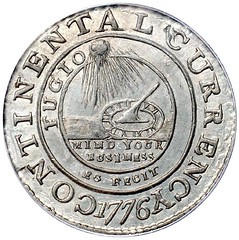
PREV ARTICLE
NEXT ARTICLE
FULL ISSUE
PREV FULL ISSUE
NOTES FROM E-SYLUM READERS: OCTOBER 7, 2018Update to Bowers Continental Dollar Article
Dave has since updated his article, and we have done the same with the version of the E-Sylum archived on the NBS web site. Perhaps someday some contemporary documentation will be found to settle once and for all the uncertainty around the origin of these pieces. While it's heartening to see many people open to new evidence and thinking, I don't see a solid verdict on these yet one way or another. The British origin theory is gaining traction, but I'm not sure the American origin theory can be completely ruled out either. As we noted at the beginning of this discussion some months back, all we have is a lack of evidence. -Editor To read the updated E-Sylum article, see: To read the updated Mint News Blog article, see: Cheyenne Agency Token You have a photo error in the Feisel section. You have two “paradise” items and no Cheyenne Agency token. Oops - Larry's right. One of the images was duplicated. Here it is. We'd also updated the version archived on the NBS web site. Thanks. -Editor 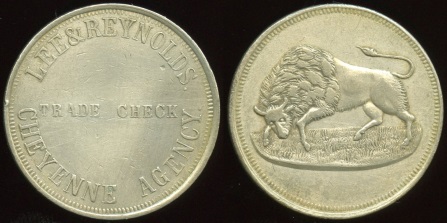 To read the earlier E-Sylum article, see: Clapp's French Sale Catalog Thanks to George Kolbe's help we now know there are at least nine leatherbound French catalogs around. Can anyone who has seen George Clapp's copy, I think it's at the Carnegie Library of Pittsburgh, share with the readers whether his was also in leather and whether his name was stamped on the front cover? I know B. Max Mehl and Clapp were not close ! I've seen the copy in the Wadsworth Rare Book Room at Carnegie Library, but I'm afraid I don't remember if it was a deluxe copy. I was still pretty new to numismatic literature and not familiar with the variants. And there were no cell phones in those days to capture photos. Can anyone help on this one? -Editor To read the earlier E-Sylum article, see: Plaster Casts in Coin Photography The article last week by Jeff Garrett on photography in numismatics described a photograph of an 1804 Silver Dollar which was "actually a photo of a plaster cast; the actual coins were deemed too shiny to photograph". -Editor Kavan Ratnatunga writes: Do you have a range in years that the plaster cast method was used? I found same in the Ceylon Coins and Currency book published in 1924: Jan Lingen gave some possible reasons on that page but not that the coins would have been to shiny. Is that because the film sensitivity was low and the object had to be highly illuminated to photograph? However, since a coin is nearly flat couldn't a wider aperture and longer exposure could be used if that was the case? I am trying to understand all the reasons for the use of a plaster cast method. I haven't studied photography in numismatic literature. Can anyone help answer Kavan's questions? During what period were plaster casts primarily used? Thank you. -Editor Testoons and Shillings No! Previously known as testoons, but of a similar twelve pence value, they originated c.1504 under Henry VII. However, I expect that quite a lot of your English correspondents will be telling you similarly. Thank you. Here is a short history from the Royal Mint Museum web site. -Editor 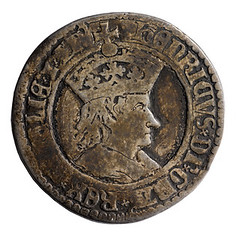 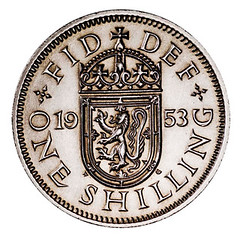 Left: Henry VII testoon; Right: Elizabeth II shilling, 1953 The shilling as a coin was introduced at the beginning of the 16th century during the last years of the reign of Henry VII and until the middle of that century was known as a testoon. It was one of the first English coins to bear a real portrait of the monarch instead of the representative portrait which had served for the previous ten centuries; and it was for this reason that it derived its name of testoon from the Italian Testone or Headpiece introduced in Milan in 1474. Convenient in size and value, the shilling became one of the popular workhorses of the silver circulation. Colloquially described for some unknown reason as a bob, it was not superseded until 1968, during the preparations for decimalisation, To read the complete article, see: To read the earlier E-Sylum article, see: 1978 Zodiac Calendar Medal Designer Marcel Jovine is the artist in question Correct -Editor To read the earlier E-Sylum article, see: What Is That Thing? 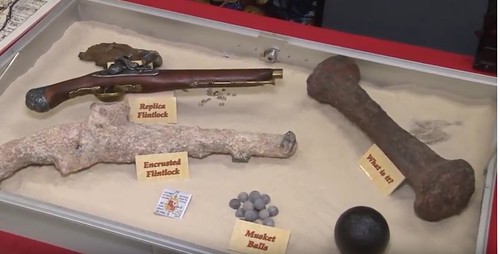 Gary Beals writes: Well now I am curious (even though it is not numismatics) — The bar-bell shaped piece in the display case at Ben Costello's 1715 Fleet Treasure Coins display is marked with “What is it?” unlike all the other pieces which are identified. I can’t tell if the display is going after audience involvement or the exhibitor does not know that that piece is. I believe that is an invention cannoneers created centuries ago hoping to tear away a sailing ship’s rigging and canvas. It was supposed to whirl through the air and rip away a vessel’s ability to sail properly. But in reality the pieces just flew straight and punched out a round hole in the sail rather than ripping great gashes in the material aloft. That’s my memory from somewhere — and after all, I was in the U.S. Air Force not the Navy. Correct! The sign encourages people to ask, and that is indeed the answer. The intent at least, was to blast these at the enemy ship's rigging. -Editor To read the earlier E-Sylum article, see: Confederate Numismatica Supplement One Correction Author Peter Bertram submitted this correction to his Confederate Numismatica Supplement One. Thanks. -Editor 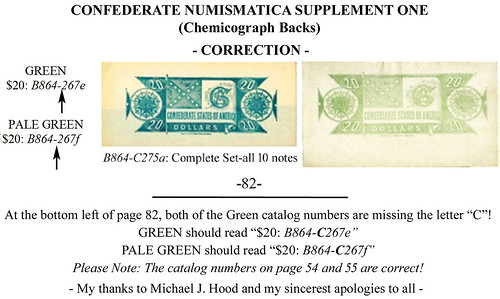 For more information on his book, see these earlier E-Sylum articles: 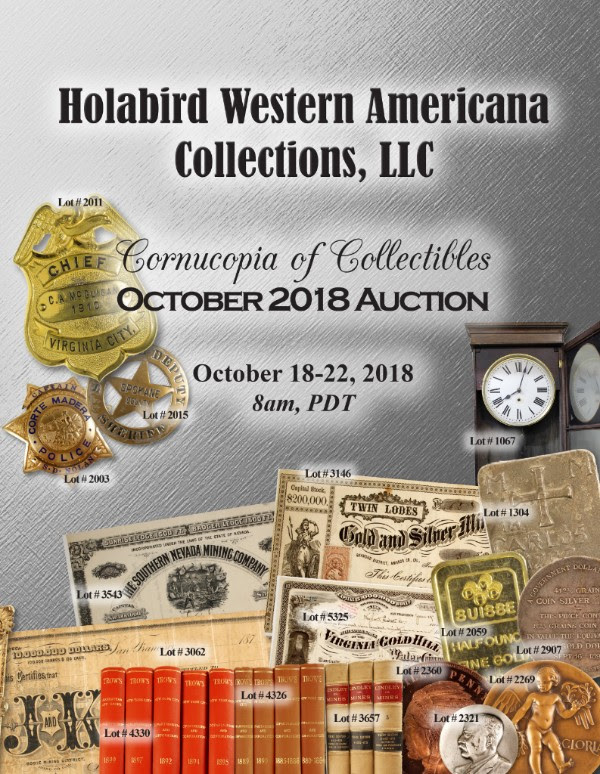 Wayne Homren, Editor The Numismatic Bibliomania Society is a non-profit organization promoting numismatic literature. See our web site at coinbooks.org. To submit items for publication in The E-Sylum, write to the Editor at this address: whomren@gmail.com To subscribe go to: https://my.binhost.com/lists/listinfo/esylum All Rights Reserved. NBS Home Page Contact the NBS webmaster 
|
